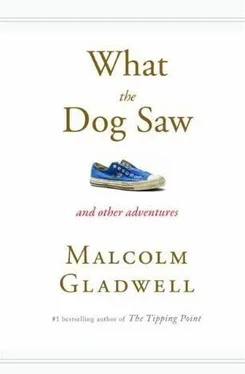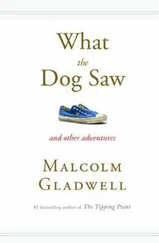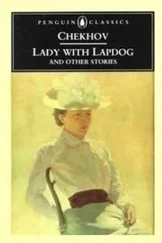The Polykoff campaigns were a sensation. Letters poured in to Clairol. “Thank you for changing my life,” read one, which was circulated around the company and used as the theme for a national sales meeting. “My boyfriend, Harold, and I were keeping company for five years but he never wanted to set a date. This made me very nervous. I am twenty-eight and my mother kept saying soon it would be too late for me.” Then, the letter writer said, she saw a Clairol ad in the subway. She dyed her hair blond, and “that is how I am in Bermuda now on my honeymoon with Harold.” Polykoff was sent a copy with a memo: “It’s almost too good to be true!” With her sentimental idyll of blond mother and child, Shirley Polykoff had created something iconic.
“My mother wanted to be that woman in the picture,” Polykoff’s daughter, Frick, says. “She was wedded to the notion of that suburban, tastefully dressed, well-coddled matron who was an adornment to her husband, a loving mother, a long-suffering wife, a person who never overshadowed him. She wanted the blond child. In fact, I was blond as a kid, but when I was about thirteen my hair got darker and my mother started bleaching it.” Of course—and this is the contradiction central to those early Clairol campaigns—Shirley Polykoff wasn’t really that kind of woman at all. She always had a career. She never moved to the suburbs. “She maintained that women were supposed to be feminine, and not too dogmatic and not overshadow their husband, but she greatly overshadowed my father, who was a very pure, unaggressive, intellectual type,” Frick says. “She was very flamboyant, very emotional, very dominating.”
One of the stories Polykoff told about herself repeatedly—and that even appeared after her death in her New York Times obituary—was that she felt that a woman never ought to make more than her husband, and that only after George’s death, in the early sixties, would she let Foote, Cone & Belding raise her salary to its deserved level. “That’s part of the legend, but it isn’t the truth,” Frick says. “The ideal was always as vividly real to her as whatever actual parallel reality she might be living. She never wavered in her belief in that dream, even if you would point out to her some of the fallacies of that dream, or the weaknesses, or the internal contradictions, or the fact that she herself didn’t really live her life that way.” For Shirley Polykoff, the color of her hair was a kind of useful fiction, a way of bridging the contradiction between the kind of woman she was and the kind of woman she felt she ought to be. It was a way of having it all. She wanted to look and feel like Doris Day without having to be Doris Day. In twenty-seven years of marriage, during which she bore two children, she spent exactly two weeks as a housewife, every day of which was a domestic and culinary disaster. “Listen, sweetie,” an exasperated George finally told her. “You make a lousy little woman in the kitchen.” She went back to work the following Monday.
This notion of the useful fiction—of looking the part without being the part—had a particular resonance for the America of Shirley Polykoff’s generation. As a teenager, Shirley Polykoff tried to get a position as a clerk at an insurance agency and failed. Then she tried again, at another firm, applying as Shirley Miller. This time, she got the job. Her husband, George, also knew the value of appearances. The week Polykoff first met him, she was dazzled by his worldly sophistication, his knowledge of out-of-the-way places in Europe, his exquisite taste in fine food and wine. The second week, she learned that his expertise was all show, derived from reading the Times. The truth was that George had started his career loading boxes in the basement of Macy’s by day and studying law at night. He was a faker, just as, in a certain sense, she was, because to be Jewish—or Irish or Italian or African-American or, for that matter, a woman of the fifties caught up in the first faint stirrings of feminism—was to be compelled to fake it in a thousand small ways, to pass as one thing when, deep inside, you were something else. “That’s the kind of pressure that comes from the immigrants’ arriving and thinking that they don’t look right, that they are kind of funny-looking and maybe shorter than everyone else, and their clothes aren’t expensive,” Frick says. “That’s why many of them began to sew, so they could imitate the patterns of the day. You were making yourself over. You were turning yourself into an American.” Frick, who is also in advertising (she’s the chairman of Spier NY), is a forcefully intelligent woman, who speaks of her mother with honesty and affection. “There were all those phrases that came to fruition at that time—you know, ‘clothes make the man’ and ‘first impressions count.’” So the question “Does she or doesn’t she?” wasn’t just about how no one could ever really know what you were doing. It was about how no one could ever really know who you were. It really meant not “Does she?” but “Is she?” It really meant “Is she a contented homemaker or a feminist, a Jew or a Gentile—or isn’t she?”
In 1973, Ilon Specht was working as a copywriter at the McCann-Erickson advertising agency, in New York. She was a twenty-three-year-old college dropout from California. She was rebellious, unconventional, and independent, and she had come East to work on Madison Avenue, because that’s where people like that went to work back then. “It was a different business in those days,” Susan Schermer, a longtime friend of Specht’s, says. “It was the seventies. People were wearing feathers to work.” At her previous agency, while she was still in her teens, Specht had written a famous television commercial for the Peace Corps. (Single shot. No cuts. A young couple lying on the beach. “It’s a big, wide wonderful world” is playing on a radio. Voice-over recites a series of horrible facts about less fortunate parts of the world: in the Middle East half the children die before their sixth birthday, and so forth. A news broadcast is announced as the song ends, and the woman on the beach changes the station.)
“Ilon? Omigod! She was one of the craziest people I ever worked with,” Ira Madris, another colleague from those years, recalls, using the word crazy as the highest of compliments. “And brilliant. And dogmatic. And highly creative. We all believed back then that having a certain degree of neurosis made you interesting. Ilon had a degree of neurosis that made her very interesting.”
At McCann, Ilon Specht was working with L’Oréal, a French company that was trying to challenge Clairol’s dominance in the American hair-color market. L’Oréal had originally wanted to do a series of comparison spots, presenting research proving that their new product—Preference—was technologically superior to Nice ’n Easy because it delivered a more natural, translucent color. But at the last minute the campaign was killed because the research hadn’t been done in the United States. At McCann, there was panic. “We were four weeks before air date and we had nothing—nada,” Michael Sennott, a staffer who was also working on the account, says. The creative team locked itself away: Specht, Madris—who was the art director on the account—and a handful of others. “We were sitting in this big office,” Specht recalls. “And everyone was discussing what the ad should be. They wanted to do something with a woman sitting by a window, and the wind blowing through the curtains. You know, one of those fake places with big, glamorous curtains. The woman was a complete object. I don’t think she even spoke. They just didn’t get it. We were in there for hours.”
Ilon Specht has long, thick black hair, held in a loose knot at the top of her head, and lipstick the color of maraschino cherries. She talks fast and loud, and swivels in her chair as she speaks, and when people walk by her office they sometimes bang on her door, as if the best way to get her attention is to be as loud and emphatic as she is. Reminiscing not long ago about the seventies, she spoke about the strangeness of corporate clients in shiny suits who would say that all the women in the office looked like models. She spoke about what it meant to be young in a business dominated by older men, and about what it felt like to write a line of copy that used the word woman and have someone cross it out and write girl.
Читать дальше











